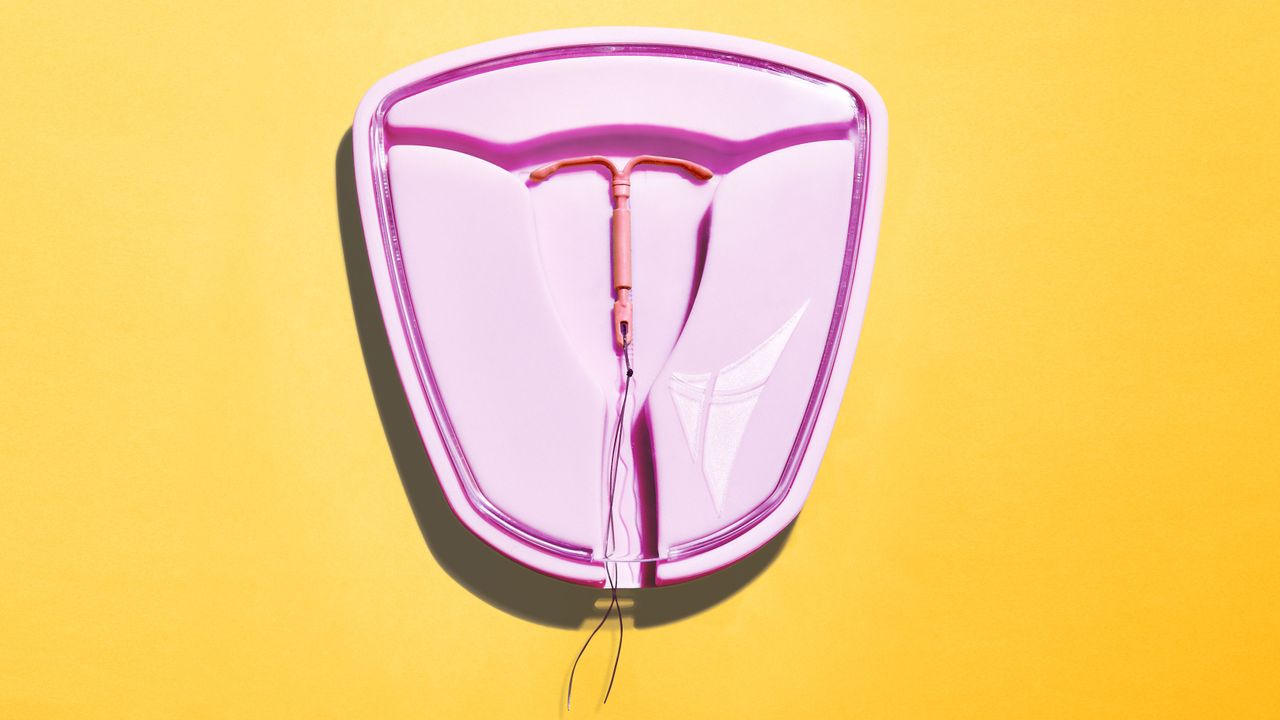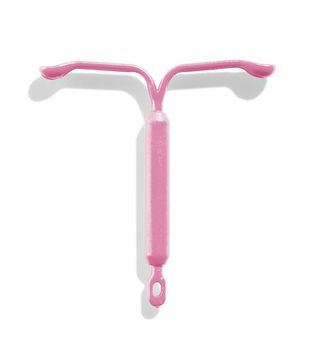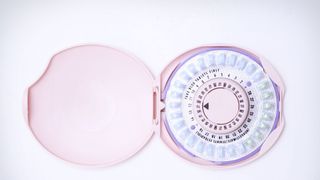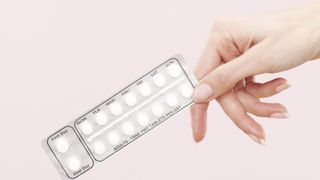The IUD Vs. The World
The IUD is the most effective contraceptive the world has ever seen. So why aren’t more women using it? One nonprofit is trying to change that.


The science is irrefutable. The intrauterine device, or IUD, an inch-long, T-shaped piece of plastic inserted in the uterus, and the implant, a matchstick-size plastic rod placed in the upper arm, are the most effective forms of birth control on the planet. The devices, collectively known as long-acting reversible contraception, or LARCs, work more than 99 percent of the time, meaning fewer than 1 in 100 women using them will get pregnant each year—a failure rate so low, it rivals sterilization. (By comparison, 9 out of 100 women taking the pill, and 18 women out of 100 using condoms, get pregnant every year.)
But ask Google about the devices and a different picture emerges: “When IUDs Go Terribly Wrong,” “I Got an IUD. It Was a Nightmare,” “How Maryland Mother Escaped Death After IUD Birth Control Nearly Killed Her,” “Woman Goes Through Hell With Implanon Birth Control Implant.” Nearly every woman has heard a horror story. “I read somewhere that a woman had crippling cramps and couldn’t get out of bed for a year,” says Elizabeth, 27, a Ph.D. student at the Ohio State University who asked that we not use her last name. “I heard some women have ridiculously heavy bleeding, that you could go infertile—all sorts of really scary stuff.” She adds with a laugh, “I should not WebMD things!”
That optics problem helps explain why, among women of reproductive age in the U.S., LARCs are the least-used common method of birth control. According to a 2015 report from the U.S. Department of Health and Human Services (HHS), only 11.6 percent of women using contraception use IUDs and implants, while 26 percent take the pill, 25 percent choose female sterilization, and 15.3 percent use male condoms.
A nonprofit based in Oakland, California, called Upstream USA is on a mission to change that. Since 2014, it has been running a $20 million initiative in Delaware to help get women over their fears by educating them about each birth-control method and making sure they can easily access whatever form they choose. At the time, the state had the highest rate of unintended pregnancies in the country—at its peak, in 2010, 57 percent of all pregnancies in Delaware were unplanned—and Upstream set out to reduce that figure by ensuring every health center was equipped to provide any method of contraception in one appointment at no cost to patients. The organization hoped it would see results similar to those of an unrelated initiative in Colorado. Between 2009 and 2013, according to Colorado’s Department of Public Health and Environment, a program to reduce unintended pregnancy by increasing LARC use resulted in a 40 percent drop in the teen birthrate and a 42 percent decline in the abortion rate among women ages 15 to 19.
InsThough horror stories are ubiquitous online, women with negative experiences are the minority.
That’s how some 30 employees from hospitals and clinics around Delaware found themselves at a Westin hotel in Wilmington for a training hosted by Upstream in February. The day kicked off in a sterile conference room where Upstream had taped laminated placards to the walls with questions trainees may hear from patients: Will the implant move under my skin? Will my partner feel the IUD strings during sex? Can I have an IUD if I’ve never had kids? The answers were tucked inside small, colorful envelopes at the bottom of the signs. (In short: highly unlikely; maybe, but it shouldn’t be uncomfortable; and yes.)
After a brief introduction, the group split in two. Support staff— receptionists, schedulers, community health educators, even a hospital data analyst—stayed for a crash course in birth control to stamp out hearsay with medically accurate information. For example, though horror stories are ubiquitous online, women with negative experiences with the devices are the minority. In fact, IUDs and implants have the highest rates of satisfaction of any form of birth control; a 2011 study published by the National Institutes of Health found that more than 80 percent of IUD and implant users were satisfied with the devices, compared to 54 percent of women taking the pill. As for the side effects, which include pain when the device is inserted, cramping, and irregular periods, they typically go away after three to six months.
While the support staff began to role-play counseling patients, the doctor, nurse practitioners, and medical residents in the room headed upstairs for a round of contraception Jeopardy. (Answer: This method should be avoided for a woman who wants to get pregnant in the next year. Question: What is Depo-Provera, the birth-control shot that prevents ovulation for 10 months or more?) After reviewing the risks and benefits, the trainees ripped open boxes of sample IUDs and tried inserting them into handheld plastic uteri that resembled powder compacts, before moving on to larger uteri models and then an $80,000 mechanical vagina that allowed them to monitor the patient’s comfort via a computer monitor. With practice runs performed on such fancy medical equipment, using sleek devices that look nothing like their larger, multiarm predecessors, it’s clear the IUD has come a long way.
Stay In The Know
Get exclusive access to fashion and beauty trends, hot-off-the-press celebrity news, and more.

So what’s the story behind its bad reputation? In 1960, oral contraceptives were introduced, paving the way for droves of women to enter the workforce. About five years later, the IUD arrived; by the early 1970s, nearly 10 percent of American women using contraception relied on the device, according to the Guttmacher Institute, and 17 products were in development at 15 different companies. Then came the Dalkon Shield, which was advertised as a safer alternative to the pill and quickly became the most popular IUD—upwards of 2 million women had one by 1974—and then, just as promptly, ruined everything.
In 1972, an Ohio doctor named Thad Earl sent an alarming letter to the company behind the Dalkon Shield, A.H. Robins Company, Inc., reporting that six of his patients using the device had gotten pregnant, five of whom went on to have life-threatening septic abortions due to infection. The problem was with the device’s multifilament string, which essentially served as a ladder for bacteria to climb into the uterus, leading to infections, infertility, and even death. (The design flaw has been corrected on newer IUDs, which use a monofilament string.) Between 1970 and 1974, when the Shield was pulled from the market, at least 18 women died and about 200,000 claims were filed. Ultimately, it was one of the largest tort liability cases since asbestos—a victims’ compensation fund held more than $2 billion—and resulted in the mandate that the U.S. Food and Drug Administration (FDA) regulate and approve medical devices. By 1988, the nonhormonal ParaGard IUD, which blocks pregnancy for up to 10 years because it contains copper, which prevents sperm from reaching the egg, was the only IUD left on the market, and after all the Dalkon Shield–induced terror, few women were asking their doctors for one.
The IUD never lost its appeal in Europe, however, where the Dalkon Shield was barely used. In 2000, one of the continent’s most popular IUDs, the Mirena, received FDA approval for use in the U.S. It contains hormones that prevent pregnancy for up to five years, in part by thickening the cervical mucus to block sperm from entering the uterus. But although the ParaGard and the Mirena proved safe and highly effective, by 2007, still only 2 percent of American women using birth control had the devices.
In more recent years, a spate of new products has arrived, warming women to LARCs. First, in 2011, was the Nexplanon, the arm implant, which prevents pregnancy for up to three years. Then, between 2013 and 2016, three new hormonal IUDs hit the market: the Skyla, the first IUD approved by the FDA in 13 years, which has a lower dose of hormones (earning it the nickname “Mirena’s little sister”) and prevents pregnancy for up to three years; the Liletta, a low-cost alternative that is effective for up to four years; and the Kyleena, which lasts for up to five years. But just because IUDs have improved doesn’t mean everyone is excited about them.
Trump staffers are working to make contraceptives less accessible.
Reducing unintended pregnancies—nearly 3 million a year in the U.S.—has long been a public-health objective. Doing so is an across-the-board win for women, who benefit not only in terms of their health but also economically and socially when they are able to plan their families. It also helps lower teen pregnancies and abortion, as 42 percent of unplanned pregnancies are terminated.
For decades, though, the rate of unintended pregnancies was virtually unchanged, hovering around 50 percent (meaning about half of all pregnancies were unplanned). In part, that’s because American women aren’t using the most effective birth-control methods. The Affordable Care Act (ACA) helped change that by giving more than 55 million women access to the full range of contraceptive options without having to pay out of pocket. In 2011, the rate of unintended pregnancies fell to 45 percent—a 30-year low—from 54 percent in 2008, according to Guttmacher.
But now, under the new administration, that progress is at risk. Trump staffers are working to make contraceptives, particularly the most effective forms, less accessible. (Fearing the end of free birth control when President Donald Trump was elected, thousands of women flocked to clinics for IUDs, which are prohibitively expensive without insurance, ranging from around $800 to $1,300.)
The first chipping away came in 2012, when Hobby Lobby filed a lawsuit challenging the ACA’s birth-control mandate because the crafting chain’s evangelical- Christian owners didn’t want their insurer to pay for the IUD and morning-after pill, which they believed cause abortions. (According to the American College of Obstetricians and Gynecologists, although IUDs can prevent an egg from being fertilized, they do not disrupt the implantation of a fertilized egg.) In 2014, in a 5–4 decision in the case known as Burwell v. Hobby Lobby Stores, Inc., the Supreme Court exempted “closely-held” for-profit corporations from the mandate, handing a win to Hobby Lobby and previewing what was to come.
RELATED STORIES



The Trump administration includes several birth control opponents. Valerie Huber, senior policy advisor for the Office of the Assistant Secretary of Health at HHS, formerly ran Ascend, an organization that promotes abstinence-only sex education. Matthew Bowman, deputy general counsel at HHS, said in 2012 that birth control “correlate[s] with unhealthy lifestyles, especially by enabling promiscuity.” Katy Talento, a member of the White House Domestic Policy Council, has described contraceptives as “ingest[ing] a bunch of dangerous, carcinogenic chemicals” and written that women who use them risk “breaking your uterus for good.”
In October, HHS issued a rule allowing employers to stop covering birth control on the basis of sincerely held “religious beliefs or moral conviction.” (Seven state attorneys general sued the agency; at press time, the rule was blocked by federal judges in California and Pennsylvania.) In November, HHS unveiled new guidelines for its family-planning grants, calling for applicants “to conduct research leading to increased services related to discontinuing reversible contraceptive methods, such as removal of [LARCs].” In other words, HHS wants grantees to study how to get women to stop using IUDs and implants. “Encouraging people to remove IUDs is completely counter to what all the science and medical organizations have been moving toward,” says Mary Alice Carter, executive director of Equity Forward, a reproductive-rights watchdog group. “They are going to take all of that progress and essentially throw it out because it doesn’t fit the narrow viewpoint of a few people in office. … It’s way outside the boundaries of what we have seen in past administrations, both Democratic and Republican. This is not politics as usual, and that should be alarming to people.”
But politics is only part of why more women aren’t using IUDs and implants. The biggest barrier comes from an unexpected place: the medical industry itself. “It takes so much effort to get an IUD,” says Faith, 31, a performance artist in New York City who requested that we use a pseudonym. “I’ve had friends who have had to go back three times just to get it inserted. It takes a lot of persistence, and it’s just too stressful.” Faith says she wanted an IUD but was told there was a four-week waiting period. “So I ended up going on the pill, which really wasn’t the right fit for me, but I couldn’t keep waiting,” she says. (About a year later, Faith, who struggled to take the pill every day at the same time, thus lowering its effectiveness, got pregnant and had an abortion. She now has an IUD.)
The biggest barrier comes from an unexpected place: the medical industry itself.
Surprisingly, women face obstacles in procuring LARCs because the medical industry is ill-equipped to provide them. Many myths still circulate among doctors; a 2012 study published in Obstetrics & Gynecology, for example, found that about 30 percent of providers mistakenly thought the devices are not safe for women without children. That misconception partly comes from the Mirena, which was originally recommended only to women who had kids; after the Dalkon Shield, the thinking was, if anything went wrong with the new device, at least the company wasn’t risking rendering women who hadn’t had kids yet infertile. (We now know the device is perfectly safe for childless women too, but if a doctor isn’t up-to-date, he or she might not know that.) Many doctors also don’t know how to insert the devices, making them less likely to recommend them to patients. “It really depends on where you go to school and if there are any faculty there willing to train you,” says Karen Antell, an ob-gyn based in Wilmington, Delaware. Even when they do receive training, Antell says, she often hears from doctors who say, “I was trained to do this as a resident, but I never felt comfortable with it.” She recalls a patient who was placed on oral contraceptives even though she had migraines, which isn’t current medical guidance. “I said, ‘That’s not a recommended medication for you,’" Antell says. “And she told me, ‘My doctor said he doesn’t do IUDs.’ Not that he doesn’t do them, so he’ll refer you to someone else; just, he doesn’t do them, period, so it’s not available to you. That’s crazy, right?”
An additional barrier to access is the fact that providers don’t keep the devices on hand because they’re too costly to stock. They need an insurance company to agree to pay for a LARC before ordering one for a patient. As a result, women commonly have to come in for three appointments (for counseling, insertion, and follow-up). “The typical experience a woman has today across the country is that she’s given a false choice about birth control,” says Mark Edwards, cofounder and co-CEO of Upstream. “She’s told, ‘You can get the pill right now, here’s a prescription, or it’ll take you three or four visits to get one of these more effective methods.’ That’s not a real choice. True choice would be ‘You can get any method of birth control you want today. Let me tell you about them.’ ”
Delaware was an easy sell. In 2014, Edwards—who handles Upstream’s state partnerships and raises funds, while his counterpart, Peter Belden, who formerly led family-planning grants at the William and Flora Hewlett Foundation, liaises with health centers and oversees training—requested a meeting with then Delaware governor Jack Markell. “Mark told me how he had concluded that the most important thing we could do to help all people achieve their potential was to empower women to have their babies when they really want to have their babies,” says Markell, a Democrat who served as governor from 2009 to 2017. “I’d never heard it put like that before, and, frankly, he convinced me.”
Edwards told the governor about his dad, who grew up poor in Bedford-Stuyvesant, a historically black and economically depressed neighborhood in Brooklyn, and ended up sending his three kids to Harvard University. “My point was that, in just one generation, there was this huge shift in opportunity, and you don’t see that shift happening as much anymore,” Edwards says. “I think as a country we’re wrestling with this question of, How do we help more people achieve the American Dream? Our work is at the center of that conversation.” Edwards came to that notion after four years at Opportunity Nation, the nonprofit he started in 2010 to expand economic mobility. “I spent a lot of time talking to young people,” he says, “and I was struck by how many of their stories began with ‘Well, I got my girlfriend pregnant’ or ‘I found myself pregnant and had to drop out of school.’ ”
In January 2016, Markell mentioned Upstream’s work in his final State of the State address. “I don’t think a governor had ever really talked about this kind of thing before in this setting,” Markell says. “It was met with a lot of silence. I guess it was the idea of a 55-year-old male talking about IUDs and implants to all of these legislators. I was looking to see if anyone would slide out of their chair and under their desk, but they didn’t. They probably wanted to, though.”
By 2017, Upstream had reached more than 80 percent of the state’s health-care landscape, including hospitals, private-practice groups, public health centers, and Planned Parenthood clinics. “When you find something that actually improves the quality of people’s lives, isn’t that why we’re supposed to be serving in the first place?” Markell says of his legacy. “At the end of the day, I believe it will be one of the most important public-health initiatives we’ve seen in this country for a long time.”
For such revolutionary power, much of Upstream’s work comes down to one simple question: Do you want to get pregnant in the next year? Staff at health centers working with Upstream are taught to ask that question of every woman of reproductive age, even if she’s there for an unrelated issue like bronchitis or a bum ankle, in the way that nurses check blood pressure, height, and weight at every office visit. If the answer is yes, it triggers a chat about preconception care; if it’s no, it opens a dialogue about what the woman is using for birth control and, potentially, a LARC insertion.
Karen Antell, the Wilmington-based ob-gyn, has taught hundreds of providers how to insert IUDs at Upstream trainings and at follow-up sessions at clinics where doctors and nurse practitioners can book time with her to practice insertions on real women. Ten years ago, when Antell started working at Christiana Care Health System, the state’s largest heath-care system, she “was one of only two or three faculty members who did IUD insertions.” Now she marvels at how far Christiana Care has come. “We’ve trained primary-care providers, family physicians, some internists, and pediatricians,” she says. “It’s not every provider at every practice, but the idea is that we’ll always have someone trained to do insertions at each office so patients don’t have to be referred somewhere else.” Antell tells a story of a woman who recently had an appointment to get her birth-control shot, which is given every three months. During intake, the medical assistant noticed that the patient had been showing up late for her injections, putting her at risk of getting pregnant, and asked if she was interested in a different method. The patient read some materials on her options and decided to get an implant. “They put her on my schedule, and I did it that day,” Antell says. “That’s the kind of thing that can happen when everyone understands how these devices work.”
Four years after launching in Delaware, Upstream has found that when women can easily access contraception, they tend to opt for the most effective forms. According to a March 2018 report commissioned by Upstream from the nonprofit research center Child Trends, in two years, LARC use doubled among women ages 20 to 39 at Delaware’sTitle X clinics, which serve low-income patients, from 13.7 percent in 2014 to 27 percent in 2016. Further, the state experienced a simulated 15 percent drop in unintended pregnancies. (In the same time period, LARC use at Title X clinics nationwide increased from 13.6 percent to 17.6 percent, and unintended pregnancies decreased by 1.3 percent.) This month, as Upstream announces new partnerships with Massachusetts and Washington state and puts plans in place to bring on a red state within the next year, all signs point to its work being the model for how the U.S. as a whole could dramatically reduce its rate of unintended pregnancies once and for all.
In June 2017, when Elizabeth, the Ohio State Ph.D. student, was visiting family in Delaware, she faced her IUD fears and went to a Planned Parenthood clinic, where she encountered staff trained by Upstream. “I was apprehensive and had a lot of questions, but they immediately calmed my fears,” she says. “The counselor showed me everything and was like, ‘You can touch it, you can bend it—see what you think.’ ” Elizabeth chose the Liletta and got it inserted that day for free. “Since then, I’ve had no problems. It’s great,” she says. “And I know no matter what the government decides to do in terms of health care, I’m good.”
This story appears in the July issue of Marie Claire, on newsstands now.
Kayla Webley Adler is the Deputy Editor of ELLE magazine. She edits cover stories, profiles, and narrative features on politics, culture, crime, and social trends. Previously, she worked as the Features Director at Marie Claire magazine and as a Staff Writer at TIME magazine.
-
 Acne Doesn’t Stand a Chance Against the (Somewhat Chaotic) My Morning Routine
Acne Doesn’t Stand a Chance Against the (Somewhat Chaotic) My Morning RoutineKeep the texture and irritation at bay with these editor-vetted items.
By Ariel Baker Published
-
 Hailey Bieber’s Just as Obsessed With This ‘90s Hair Accessory As the Rest of Us
Hailey Bieber’s Just as Obsessed With This ‘90s Hair Accessory As the Rest of UsThe new mom was spotted in this Fashion Week-approved trend while running errands.
By Ariel Baker Published
-
 Prince William's Love of Family Travel "Has Been Shaped" by Princess Diana's Death and Desire for a "Normal Upbringing"
Prince William's Love of Family Travel "Has Been Shaped" by Princess Diana's Death and Desire for a "Normal Upbringing""He understands his duty but also wants to make sure his family comes first."
By Kristin Contino Published
-
 Senator Klobuchar: "Early Detection Saves Lives. It Saved Mine"
Senator Klobuchar: "Early Detection Saves Lives. It Saved Mine"Senator and breast cancer survivor Amy Klobuchar is encouraging women not to put off preventative care any longer.
By Senator Amy Klobuchar Published
-
 I'm an Egg Donor. Why Was It So Difficult for Me to Tell People That?
I'm an Egg Donor. Why Was It So Difficult for Me to Tell People That?Much like abortion, surrogacy, and IVF, becoming an egg donor was a reproductive choice that felt unfit for society’s standards of womanhood.
By Lauryn Chamberlain Published
-
 The 20 Best Probiotics to Keep Your Gut in Check
The 20 Best Probiotics to Keep Your Gut in CheckGut health = wealth.
By Julia Marzovilla Published
-
 Simone Biles Is Out of the Team Final at the Tokyo Olympics
Simone Biles Is Out of the Team Final at the Tokyo OlympicsShe withdrew from the event due to a medical issue, according to USA Gymnastics.
By Rachel Epstein Published
-
 The Truth About Thigh Gaps
The Truth About Thigh GapsWe're going to need you to stop right there.
By Kenny Thapoung Published
-
 The High Price of Living With Chronic Pain
The High Price of Living With Chronic PainThree women open up about how their conditions impact their bodies—and their wallets.
By Alice Oglethorpe Published
-
 I Used to Imagine Murdering the Men I Dated
I Used to Imagine Murdering the Men I DatedFalling in love helped me finally figure out why.
By Jessica Amento Published
-
 60 Workout Apps for Women Who Want Results (Without a Gym Membership)
60 Workout Apps for Women Who Want Results (Without a Gym Membership)Buying Guide Easy fitness plans you can follow without fear of judgment.
By Bianca Rodriguez Published
